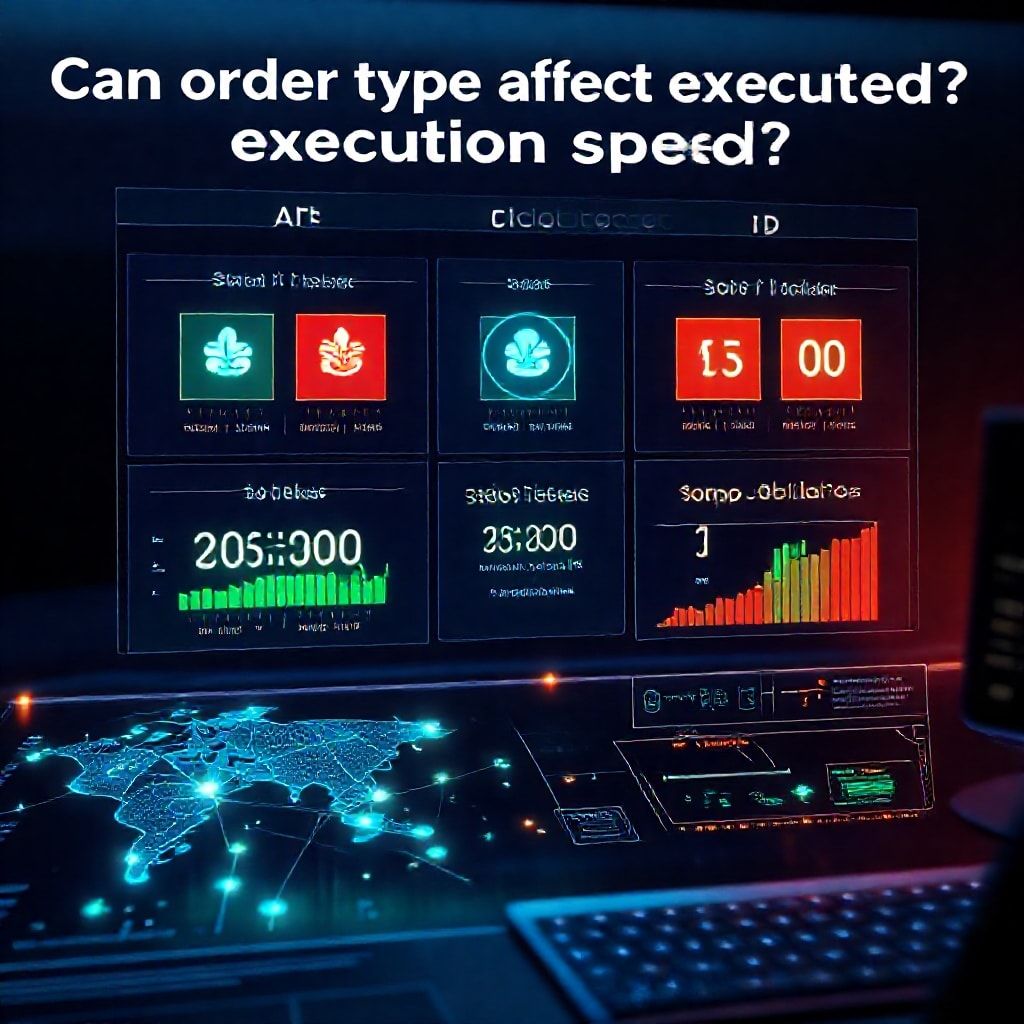Can order type affect the speed of trade execution with various brokers?
Can order type affect the speed of trade execution with various brokers?
Introduction
In markets that pulse faster than a heartbeat, your choice of order type isn’t a mere preference—it’s a tool that can shave or stretch precious milliseconds off trade execution. Think of your screen as a highway and your order as a car: the type you pick determines the lane you’re in, the tolls you pay, and how quickly you reach the exit. This piece digs into how order types interact with different brokers, across assets from forex to crypto, stocks to commodities, and what traders can do to stay fast, safe, and adaptable in a shifting landscape.

Order types and speed: what really happens behind the button
- Market orders deliver speed, with traders taking the best available price right now. The word “right now” hides a truth: speed depends on routing and venue latency. Even a lifestyle-fast market order can get slowed by slow feeds, congested exchanges, or protected liquidity in certain venues.
- Limit orders trade speed for precision. They sit on an order book until the price meets your level, which can mean waiting—and sometimes missing the shot if the market moves away.
- IOC/FOK orders push for immediate clear outcomes, either partial fills or full cancellation. They’re a middle ground: you win speed if liquidity is there, but you can still get caught waiting if it isn’t.
- Across brokers, execution speed hinges on routing efficiency, proximity to liquidity, API vs. UI pathways, and the broker’s own order-management logic. Some brokers co-locate servers near major venues; others rely on intermediaries, which adds hop-count to every trade.
Broker ecosystems and latency: different paths to speed
- ECN and institutional venues often shave time with direct feeds and dense liquidity, especially in FX and futures. Market makers may quote aggressively, but their latency patterns can vary with crowding and risk checks.
- Dark pools or alternative venues can improve fills but add uncertainty about price reference and timing. For some traders, a higher fill rate matters more than a tiny price edge.
- Crypto and tokenized assets mix on-chain latency with off-chain order routing. On-chain trades can be bounded by block times, while centralized exchanges push near-instant fills—yet congestion can spike latency during headlines or flash crashes.
- In practice, a trader might test multiple brokers on a given asset class to map latency profiles: where can a market order hit the best price fastest? Where does a responsive limit order sit on the book?
Asset-class implications: speed varies by playground
- Forex and indices often enjoy deep liquidity, where tight spreads and fast routes reward market orders.
- Stocks benefit from major exchanges’ fast matching but can suffer when routing to multiple venues is involved.
- Crypto is a mixed bag: some pairs settle quickly on centralized platforms; others depend on network congestion and custodial speed.
- Options and commodities add nuance: options routing can be complex as risk checks and leg-pricing slow things; commodities liquidity can swing with macro news.
- Across every asset, speed must be weighed against liquidity, price impact, and your risk tolerance.
Reliability and risk management: strategies that fit speed
- Use a mix of order types tailored to the moment: market orders for news-driven entries, limit orders when you have a clear price target, IOC for quick exits.
- Test latency in quiet times and during typical bursts; keep a go-to broker list for different market regimes.
- Pair speed with risk controls: set protective stops, use smaller sizing in illiquid windows, and avoid over-reliance on a single venue.
- Leverage smart chart tools and real-time heatmaps to identify where liquidity concentrates, guiding when to deploy which order type.
Web3, DeFi, and the future: where speed is headed
- Decentralized finance brings programmable speed via smart contracts, but MEV and network congestion can introduce new timing challenges. Smart contracts are advancing, yet reliability hinges on chain speed and oracle quality.
- AI-driven routing and execution management promise smarter lane choices across venues, including cross-exchange opportunities and liquidity-aware decision-making.
Practical takeaways: condensing speed into smarter trading
- Pick brokers with proven low-latency routes and transparent fill histories.
- Align order types with liquidity and time horizon, not just price.
- Stay aware of the trade-off between speed, price, and certainty; speed alone rarely wins if it costs you value.
- Keep an eye on future trends: faster settlement rails, more intelligent routing, and safer integration of AI and smart contracts.
Slogan: Trade faster, smarter, across markets—where speed meets precision.
Bottom line: Can order type affect execution speed across brokers? Yes—but the smart move is to tailor the mix to asset class, market conditions, and your risk plan, while staying adaptable as technology, networks, and DeFi evolve.